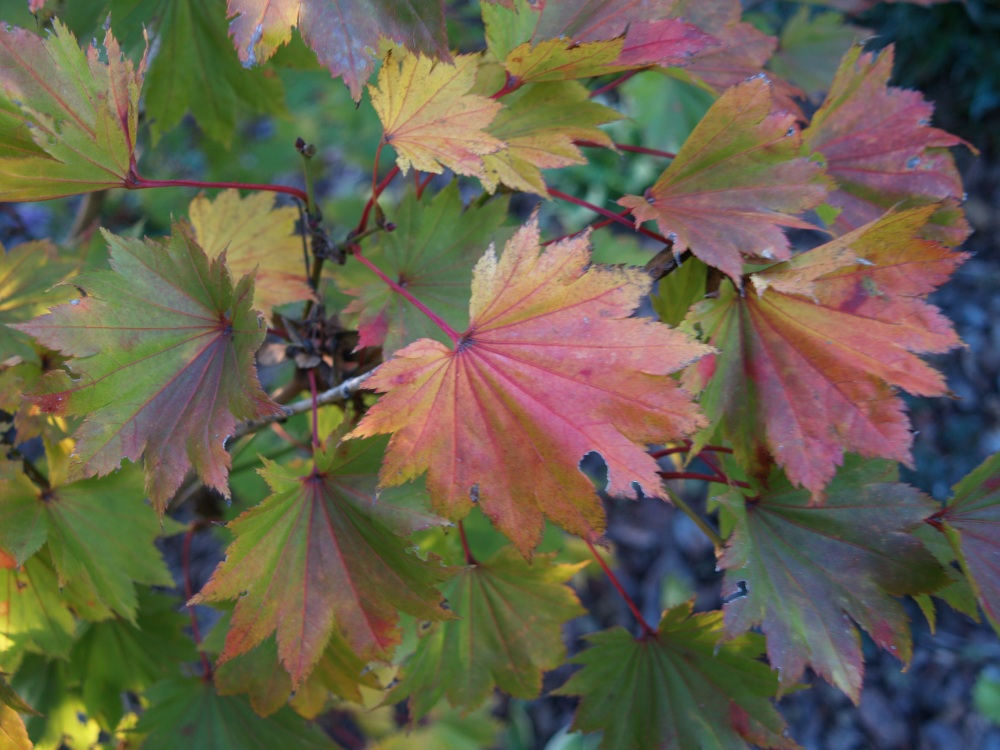Oddly, between bouts of unusually warm temperatures, the garden has begun to take on the more typical appearance of autumn. Late or not, maples (Acer rubrum) in the forest have turned to yellow, and while the garden’s dogwoods (Cornus florida, below) slowly turn to crimson, ones in the neighboring forest are in full blown autumn brilliance.


How this change to autumn colors has been accomplished in nearly summer heat is a mystery, and without substantial frost the garden is now ornamented with both flowers and splendid foliage. Certainly, this cannot last for long, but the gardener will make the best of these last magnificent days when the autumn sun warms short sleeved arms, and every remaining bud of toad lilies (Tricyrtis, above) will flower before the first hard frost.
Finally, the wait is over for the often spectacular Fernleaf Japanese maple (Acer japonicum ‘Aconitifolium’, above) to show its stuff. Until a single thirty-five degree night, the maple’s leaves remained green long after the change to mottled streaks of crimson and yellow was expected. Though many leaves display brown from injury suffered in a mid-spring freeze, and then a late summer drought, there are a sufficient number of colored leaves to satisfy.
While leaves of the Golden Full Moon maple (Acer shirasawanum ‘Aureum’, above in a more colorful autumn) dropped without coloring in recent weeks, other Japanese maples are turning late, and the Lion’s Head maple (Acer palmatum ‘Shishigashira’ ) does not begin to color until mid November in any year. The variegated ‘Oridono Nishiki’ (Acer palmatum ‘Oridono Nishiki’, below) rarely displays much color in autumn, but this year leaves turned early, and with deeper color than usual.

Of autumn flowering camellias, only ‘Winter’s Star’ flowers (above) this first week of November. Buds swell on others, but I suspect flowering will be triggered by a bit more cold.

Hi Dave, Wish I could post some of your great photos to Pinterest. How about making that possible. It would be great free advertising for your blog. Liz
On Mon, Nov 7, 2016 at 8:52 AM, Ramblin’ through Dave’s Garden wrote:
> Dave posted: “Oddly, between bouts of unusually warm temperatures, the > garden has begun to take on the more typical appearance of autumn. Late or > not, maples (Acer rubrum) in the forest have turned to yellow, and while > the garden’s dogwoods (Cornus florida, below) slow” >
I know that Google grabs photos, so I figure that anyone can use a photo at anytime. I display pictures for readers to enjoy, and I’m happy if they’re used in any manner.